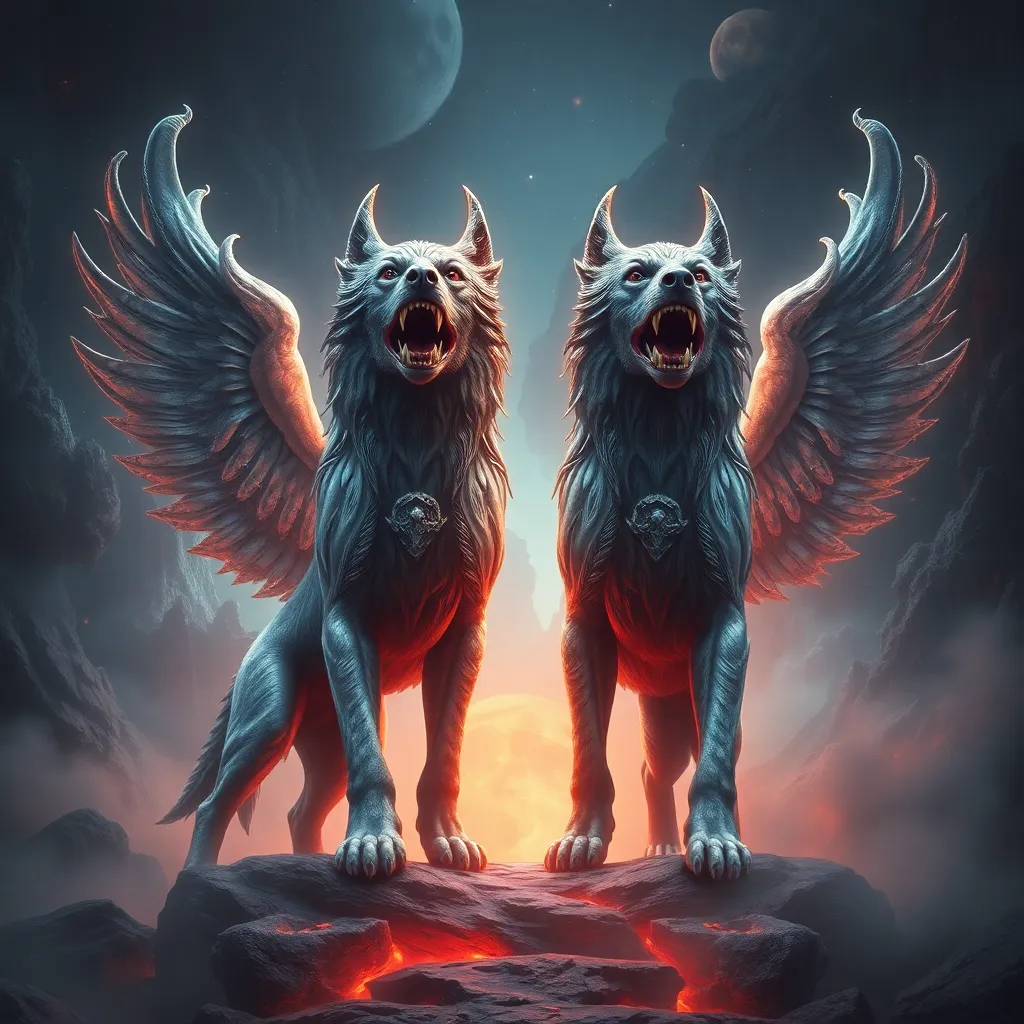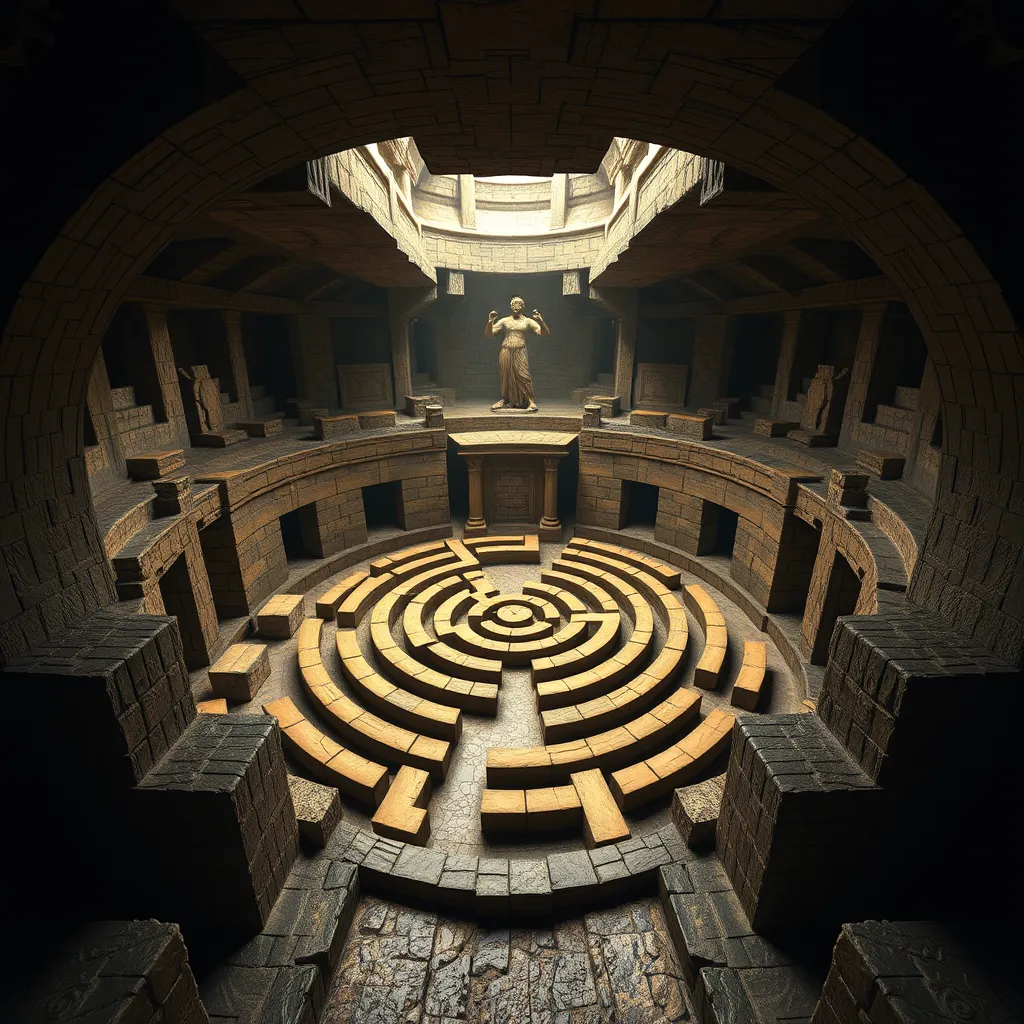Cerberus: The Mythical Gatekeeper of the Afterlife – A Comprehensive Exploration
I. Introduction
Cerberus, the legendary three-headed dog, is one of the most captivating figures in Greek mythology. Often depicted as a fearsome guardian of the Underworld, this creature has fascinated scholars, artists, and enthusiasts alike for centuries. His role as the gatekeeper of the afterlife not only underscores his importance in ancient Greek culture but also reflects broader themes of life, death, and the human condition.
This article aims to explore the origins, attributes, and significance of Cerberus, as well as his lasting impact on art, literature, and modern culture. By delving into the mythology surrounding this enigmatic figure, we gain insights into how Cerberus embodies the complex interplay of protection and fear, life and death.
II. Origins of Cerberus
A. Historical references and earliest depictions
The origins of Cerberus can be traced back to ancient texts and archaeological findings. The earliest references to Cerberus appear in Homer’s “Iliad” and “Odyssey,” where he is described as a formidable beast. Over time, artistic representations of Cerberus began to emerge, showcasing his terrifying form and reinforcing his status as a guardian of the dead.
B. Parentage: The lineage of Cerberus
Cerberus is said to be the offspring of Typhon and Echidna, both of whom are mythical monsters in their own right. This lineage reflects the dual nature of Cerberus, embodying both monstrous traits and the protective role assigned to him by the gods.
C. Cerberus in ancient texts and literature
Cerberus is referenced in various ancient texts beyond Homer’s works, including Hesiod’s “Theogony” and Virgil’s “Aeneid.” These texts contribute to the understanding of Cerberus’s character, portraying him as a fierce protector whose loyalty to Hades is unwavering.
III. Physical Description and Attributes
A. Iconic three-headed appearance
Cerberus is most famously recognized for his three heads, which symbolize his ability to watch over the entrance to the Underworld from multiple perspectives. Each head is often depicted with its unique expression, representing various aspects of his nature—ferocity, vigilance, and intelligence.
B. Other notable features (snake tails, lion’s mane, etc.)
In addition to his three heads, Cerberus is often illustrated with several distinguishing features:
- Snake-like tails that add to his monstrous appearance.
- A lion’s mane that enhances his fearsome look.
- Fangs that are sharp and menacing, emphasizing his role as a guardian.
C. Symbolism of Cerberus’s form
The various attributes of Cerberus serve symbolic purposes. His three heads represent the past, present, and future, while his fierce demeanor embodies the inevitable and often daunting nature of death. This complex imagery contributes to the depth of his character within Greek mythology.
IV. Role in Greek Mythology
A. Guardian of the Underworld: Duties and significance
As the guardian of the Underworld, Cerberus’s primary duty is to prevent the escape of the souls of the dead. This role is crucial in maintaining the balance between life and death, ensuring that the living do not encroach upon the realm of the dead.
B. Notable myths involving Cerberus (e.g., Heracles’ Twelve Labors)
Cerberus features prominently in several myths, including the story of Heracles, who was tasked with capturing the beast as one of his Twelve Labors. This myth highlights not only Cerberus’s strength but also the heroism required to confront death itself.
C. Cerberus’s interactions with gods and mortals
Cerberus interacts with various gods and mortals throughout Greek mythology, often serving as a test or challenge. His encounters with figures such as Orpheus and Psyche illustrate his dual nature as both a fearsome guardian and a creature capable of compassion under specific circumstances.
V. Cerberus in Art and Literature
A. Depictions in ancient art (vases, sculptures, etc.)
Cerberus has been a popular subject in ancient art, appearing on vases, frescoes, and sculptures. These artistic representations often emphasize his monstrous features and highlight his role as a fearsome guardian.
B. Influence on later literature and popular culture
The legacy of Cerberus extends beyond ancient Greece, influencing later literature and art. His character has appeared in works by Dante Alighieri, in which he is portrayed as a gluttonous figure in “Inferno,” and in John Milton’s “Paradise Lost.”
C. Cerberus in modern adaptations (films, books, video games)
In contemporary culture, Cerberus has been depicted in various forms of media including films, video games, and literature. Examples include:
- The “Harry Potter” series, where a three-headed dog named Fluffy serves as a guardian.
- The “God of War” video game series, which features a battle against a version of Cerberus.
- Numerous animated adaptations that portray Cerberus in both comedic and serious contexts.
VI. Symbolism and Themes
A. Cerberus as a symbol of protection and fear
Cerberus embodies the duality of protection and fear. As a guardian, he protects the realm of the dead, yet his fearsome appearance instills dread in those who approach the Underworld.
B. The dichotomy of life and death represented by Cerberus
Cerberus symbolizes the thin line between life and death, serving as a reminder of mortality. His presence at the gates of the Underworld emphasizes the inevitability of death and the importance of respecting this boundary.
C. Cerberus’s role in exploring human psyche and morality
Through his interactions and the myths surrounding him, Cerberus serves as a catalyst for exploring themes of human morality, the consequences of one’s actions, and the nature of fear. He compels individuals to confront their own beliefs about life, death, and the afterlife.
VII. Cerberus in Comparative Mythology
A. Similar figures in other cultures (e.g., Anubis, Fenrir)
Cerberus is not unique in mythological traditions. Similar figures include:
- Anubis – The Egyptian god associated with mummification and the afterlife, often depicted as a canine figure.
- Fenrir – A monstrous wolf in Norse mythology, representing chaos and destruction, prophesied to play a role in Ragnarok.
B. Comparative analysis of roles and symbolism
While each of these figures serves distinct roles in their respective mythologies, they share common themes of guardianship, the afterlife, and the relationship between life and death. Cerberus’s role as a protector of the Underworld parallels Anubis’s role in guiding souls, while Fenrir serves as a harbinger of doom.
C. Influence of Cerberus on global mythological narratives
The character of Cerberus has influenced global narratives about death and the afterlife, inspiring countless adaptations and interpretations. His presence in mythology serves as a testament to the universal human experience of grappling with mortality.
VIII. Conclusion
Cerberus stands as a powerful symbol within Greek mythology, representing the complexities of life and death. His role as the guardian of the Underworld illustrates the importance of boundaries, protection, and the inevitability of fate. The enduring legacy of Cerberus continues to resonate in modern culture, reminding us of humanity’s timeless fascination



